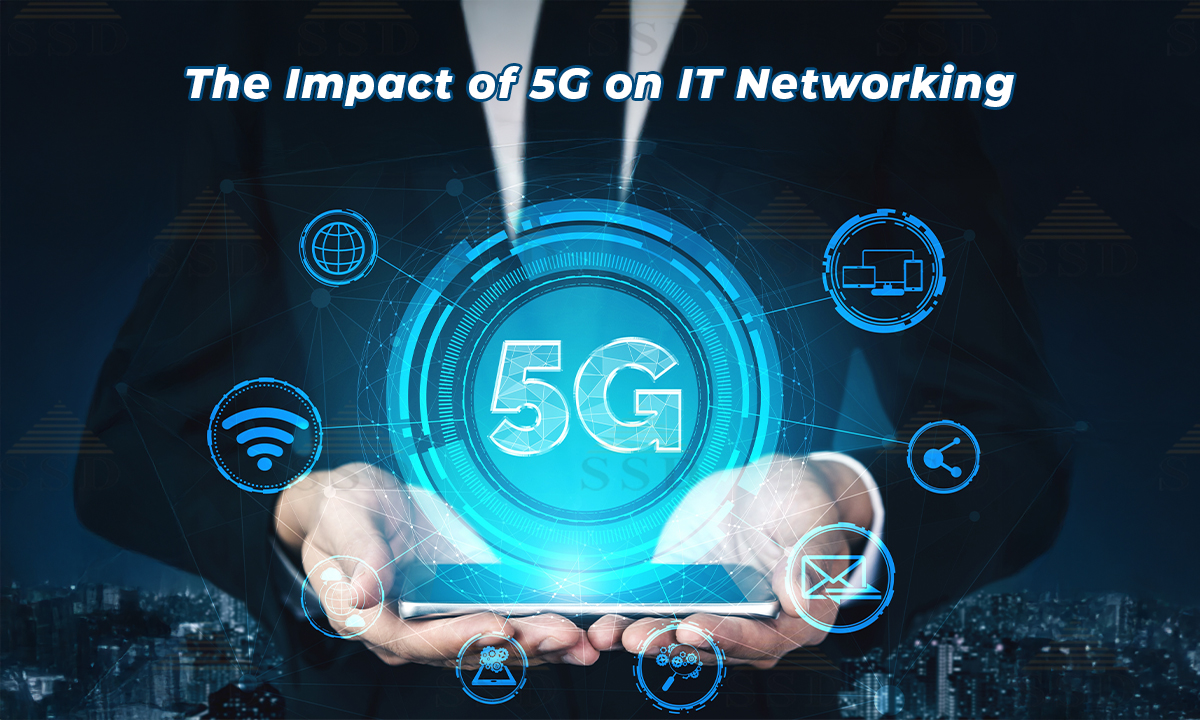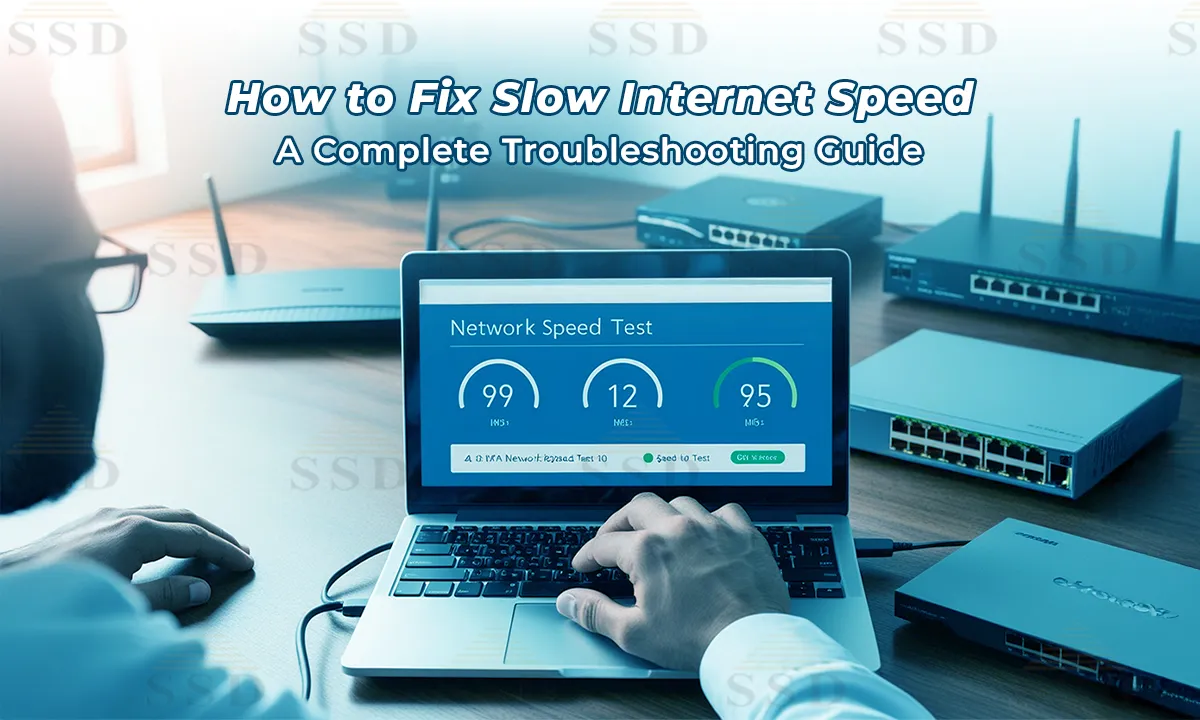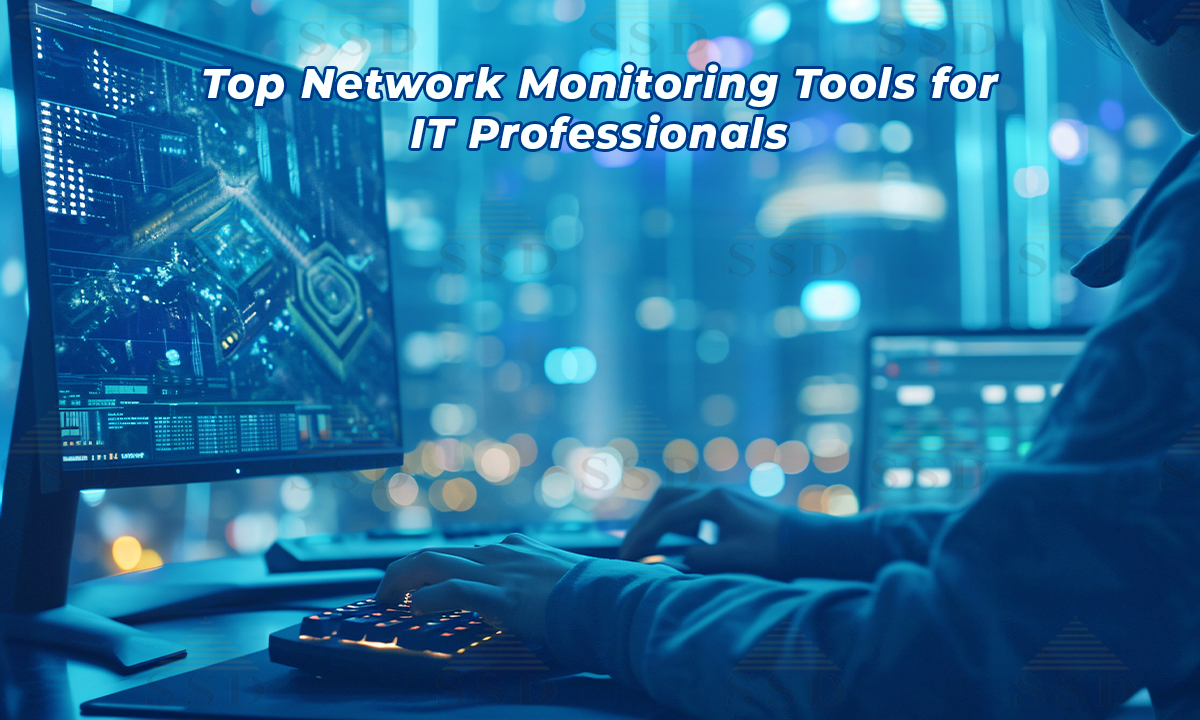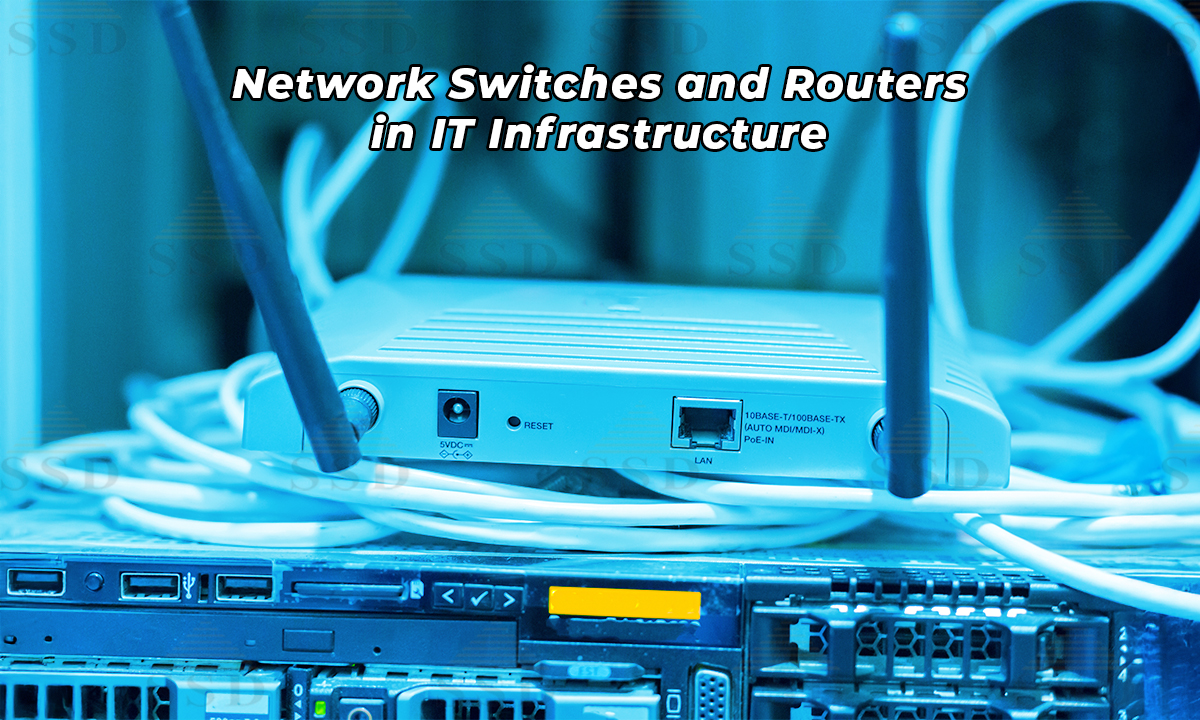The advent of 5G technology is one of the most significant developments in the world of IT networking, bringing with it the promise of faster speeds, lower latency, and the ability to handle a massive increase in connected devices. The arrival of 5G is poised to redefine how businesses, organizations, and even individuals interact with networks, revolutionizing industries from healthcare to entertainment, manufacturing, and beyond.
Let’s explore how 5G technology is influencing IT networking capabilities and infrastructure and the far-reaching implications it has for the future of connectivity.
What is 5G Networking?
5G networking is the fifth-generation mobile network technology designed to enhance wireless communication. It offers significantly higher speeds, reduced latency, increased capacity, and better connectivity compared to its predecessors. 5G enables real-time data processing, making it a game-changer for industries like healthcare, automotive, and IoT.
Key Features of 5G
High-Speed Connectivity: 5G offers speeds up to 20 Gbps, much faster than 4G.
Ultra-Low Latency: Latency is reduced to as low as 1 millisecond, improving real-time interactions.
Massive Device Connectivity: Can support millions of devices per square kilometer.
Network Slicing: Allows for customized virtual networks within the same physical infrastructure.
Improved Energy Efficiency: Reduces power consumption compared to previous networks.
Advantages of 5G in Networking
Faster Data Speeds: Enables seamless video streaming, gaming, and cloud computing.
Enhanced IoT Performance: Supports a vast number of connected devices efficiently.
Better Remote Work Solutions: Provides reliable and fast mobile connectivity for professionals.
Increased Network Capacity: Can handle higher traffic loads without congestion.
Enhanced Smart City Development: Enables real-time monitoring and automation.
Disadvantages of 5G in Networking
High Infrastructure Costs: Requires extensive investment in new hardware and fiber networks.
Limited Coverage Initially: Deployment is still in progress and is not yet widespread.
Device Compatibility Issues: Older devices cannot support 5G technology.
Potential Security Risks: More connected devices increase the risk of cyber threats.
How 5G Will Impact the Telecom Industry
Expansion of Network Services: Telecom providers will offer more advanced services, such as AR/VR streaming and smart home automation.
Shift to Cloud-Based Services: 5G enables telecom companies to rely more on cloud computing and edge computing.
Increase in Data Consumption: More data-intensive applications will drive demand for unlimited data plans.
Infrastructure Upgrades: Telecom companies must invest heavily in 5G infrastructure to stay competitive.
Impact of 5G on Global Connectivity
Now let’s explore how 5G technology is influencing IT networking capabilities and infrastructure and the far-reaching implications it has for the future of connectivity.
Lightning-Fast Speeds and Ultra-Low Latency
5G networks can offer speeds up to 100 times faster than 4G, with potential theoretical speeds of up to 20 Gbps. This leap in speed means that data-intensive applications like video streaming, cloud computing, and IoT devices can function more effectively than ever before. Additionally, 5G boasts ultra-low latency—down to 1 millisecond—enabling real-time communication and minimizing delays in data transmission.
Impact on IT Networking
- Real-Time Applications: With reduced latency, applications that demand instant response times, such as autonomous vehicles, telemedicine, remote surgery, and online gaming, will be able to function more effectively, improving user experience and operational efficiency.
- Higher Throughput: Faster speeds mean more data can be transmitted in a shorter amount of time, enhancing overall network performance. This will be especially beneficial for businesses that rely on large-scale data processing and cloud computing.
Enabling the Internet of Things (IoT)
The number of Internet of Things (IoT) devices is growing exponentially, with millions of devices expected to be connected in the coming years. 5G’s increased bandwidth and ability to handle a large number of simultaneous device connections make it the perfect fit for the growing IoT ecosystem. Whether it’s connected cars, smart homes, industrial sensors, or wearables, 5G can support the increased demand for inter-device communication.
Impact on IT Networking
- Scalability: With 5G, network infrastructures will need to be designed to handle millions of devices within a small area without compromising performance. This requires robust network architecture capable of managing massive device connections simultaneously.
- Edge Computing: The rapid expansion of IoT will also drive the need for edge computing, where data processing occurs closer to the device rather than at a centralized data center. With 5G’s ultra-low latency, devices can process and analyze data at the edge of the network, ensuring near-instantaneous decision-making.
Read : Benefits of IoT for Enterprises
Network Slicing for Customization
One of the most transformative features of 5G is network slicing, which allows operators to create multiple virtual networks that cater to specific use cases or customer needs. For instance, a business might need a dedicated, high-priority network for its critical applications, while a less critical application can be assigned a different network slice. Network slicing can be tailored for different industries, applications, or even individual customers, creating a more efficient and dynamic networking environment.
Impact on IT Networking
- Optimized Resources: IT networks can be optimized to allocate resources efficiently, depending on the priority and requirements of specific applications. Businesses can ensure that high-priority applications, such as video conferencing or ERP systems, receive the bandwidth they need, while lower-priority applications can share remaining resources.
- Reduced Congestion: By segmenting the network, network slicing helps to reduce congestion, ensuring that high-volume data traffic doesn’t impact the performance of critical systems.
Better Support for Mobile Devices and Remote Work
5G’s capabilities go beyond just faster mobile speeds—it also improves mobile device connectivity. With businesses increasingly relying on mobile and remote workforces, the need for reliable and fast mobile connectivity is more important than ever. 5G ensures a better and more stable connection for mobile devices, even in densely populated urban areas.
Impact on IT Networking
- Seamless Connectivity: Employees working remotely or on-the-go will experience faster and more reliable access to company networks, applications, and cloud services. This enhances productivity and ensures that the transition between office and remote environments is seamless.
- Improved Mobile Device Management (MDM): IT departments will need to ensure that 5G capabilities are leveraged to optimize mobile device management for a distributed workforce. This includes secure access to corporate resources and increased efficiency in remote collaboration.
Transforming Cloud and Data Center Operations
As cloud computing becomes increasingly central to business operations, the role of 5G in cloud connectivity cannot be overlooked. With 5G’s high speeds, low latency, and capacity to handle massive amounts of data, it enhances the ability of businesses to access cloud applications quickly and efficiently.
Impact on IT Networking
- Real-Time Data Access: 5G ensures that data can be accessed and processed faster than ever, making cloud applications more efficient and responsive.
- Edge-to-Cloud Communication: The combination of 5G and edge computing allows for real-time communication between devices and cloud servers. This enables new cloud-based applications that demand low latency, such as augmented reality (AR), virtual reality (VR), and real-time video streaming.
- Boosting Data Center Efficiency: Data centers will be required to support the influx of data generated by 5G networks. With 5G’s ability to handle massive data volumes, IT infrastructure will need to be upgraded to manage the increased load and ensure efficient data routing and storage.
Empowering Smart Cities and Industry 4.0
The next generation of smart cities and industrial automation (Industry 4.0) will rely heavily on 5G technology. From connected traffic systems to smart grids, autonomous vehicles, and sensor-driven operations, 5G will provide the high-speed, low-latency communication required to run these systems efficiently.
Impact on IT Networking
- Smart Cities: Cities can use 5G to monitor and manage public infrastructure, traffic patterns, and energy usage more effectively. 5G will enable better communication between sensors, traffic lights, and urban devices, leading to more efficient and sustainable city planning.
- Industrial Automation: In manufacturing and logistics, 5G enables real-time monitoring and communication between machines and devices, reducing downtime, increasing automation, and improving production processes.
Is WiFi Better Than 5G?
WiFi Advantages: More cost-effective for indoor usage, no data caps, and stable performance in a fixed environment.
5G Advantages: Better mobility, wider coverage, and improved performance in outdoor environments.
Best Use Case: WiFi is ideal for home and office settings, while 5G is better for mobile and large-scale connectivity.
Read: Choosing the Right Router for your Home/Business
How is 5G Better Than LTE?
Speed: 5G is significantly faster than LTE.
Latency: 5G has much lower latency than LTE.
Capacity: 5G supports more devices than LTE without performance degradation.
Efficiency: 5G consumes less power and offers better energy management than LTE.
Difference Between 5G and Other Networks
Speed: 5G offers gigabit speeds, while 4G/LTE provides megabit speeds.
Latency: 5G’s latency is as low as 1 ms, while 4G has 30-50 ms latency.
Device Connectivity: 5G supports a significantly higher number of devices per square kilometer.
Network Slicing: 5G allows for multiple virtual networks, which is not possible in traditional networks.
Which is the Best 5G Network in India?
As of now, several telecom companies in India are rolling out 5G services. The leading providers include
- Jio 5G: Focused on standalone 5G infrastructure, promising ultra-fast speeds.
- Airtel 5G: Offers reliable 5G services with a strong nationwide rollout plan.
- Vi (Vodafone Idea) 5G: Gradually expanding its 5G coverage with strategic partnerships.
Conclusion
5G is set to revolutionize IT networking by offering faster speeds, reduced latency, and the ability to support an explosion of connected devices. As businesses prepare for a 5G-enabled future, the impact on their networks will be profound.
The key impacts of 5G on IT networking include
- Faster data speeds and real-time communication.
- Increased support for IoT devices and edge computing.
- Enhanced mobile connectivity and support for remote work.
- Improved cloud computing, data centers, and real-time access to applications.
- The rise of smart cities and industrial automation.
As 5G technology continues to unfold, it will shape the future of IT networking, enabling more efficient, reliable, and connected systems across industries. IT teams and organizations must prepare for this transformation by upgrading their infrastructure and embracing the opportunities that 5G brings.
FAQ’s
1. What is a network function in 5G?
A network function in 5G refers to the modular components that make up the 5G core network, such as user authentication, data routing, and security. These functions are cloud-native and can be dynamically deployed as needed.
2. How does 5G impact IoT (Internet of Things)?
5G enhances IoT by supporting a massive number of connected devices with high-speed, low-latency communication. This is crucial for applications like smart homes, industrial automation, and connected vehicles.
3. What are the security risks of 5G networks?
Since 5G networks connect more devices and rely on cloud-based operations, they are more vulnerable to cyber threats, data breaches, and potential hacking attempts. Strong encryption and security protocols are needed to mitigate these risks.
4. What is the impact of 5G on cloud computing?
5G enables faster and more reliable access to cloud services, supporting edge computing, real-time data processing, and seamless remote work capabilities.
5. How does 5G affect battery life in mobile devices?
While 5G is more power-efficient in handling data transmission, it can drain battery life faster due to higher processing demands, especially in areas with weak 5G signals.
6. Will 5G replace fiber-optic broadband?
No, 5G and fiber broadband complement each other. Fiber remains the backbone of high-speed internet, while 5G provides mobility and wireless connectivity.
7. 5G interfere with other wireless technologies?
There have been concerns about 5G interfering with weather radar, aviation systems, and certain satellite communications, but regulatory bodies are working to mitigate these issues.






